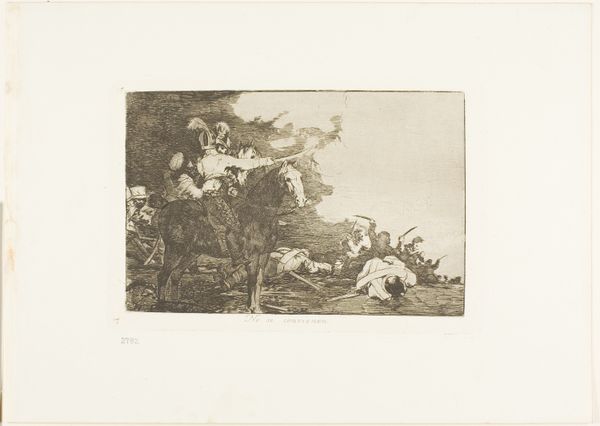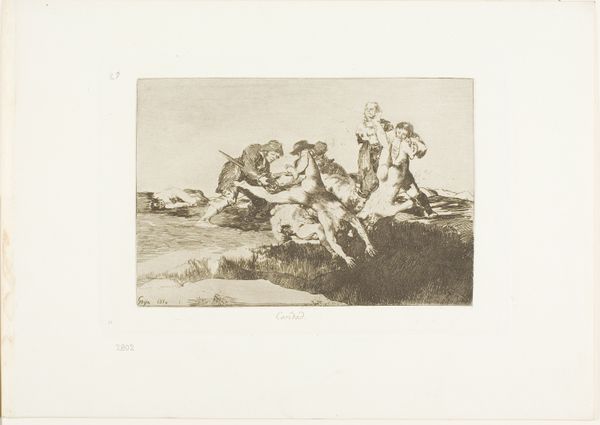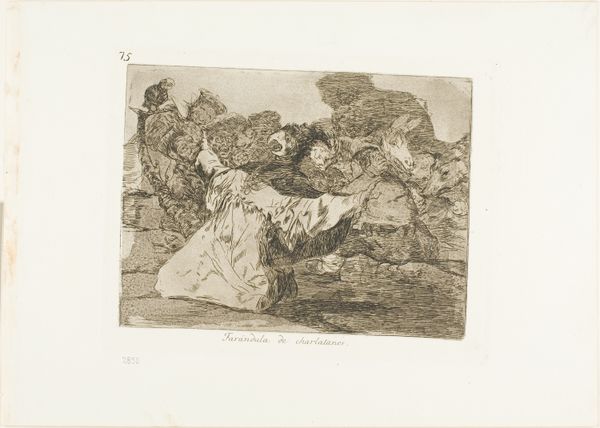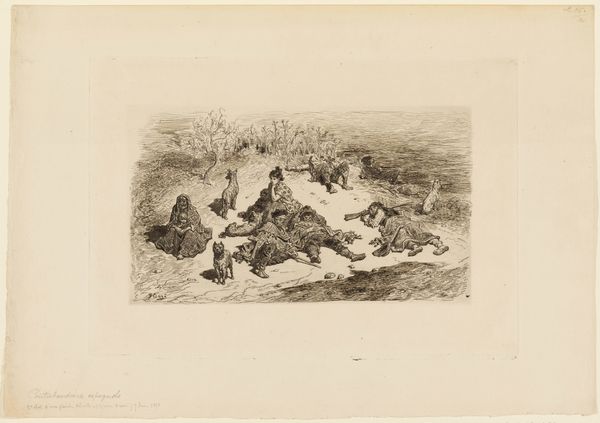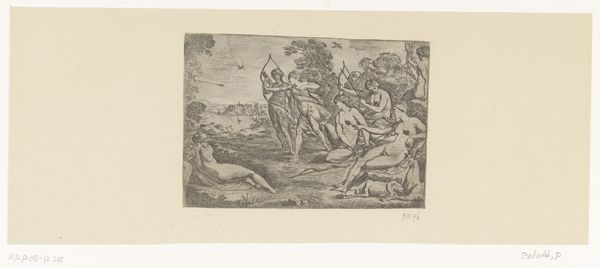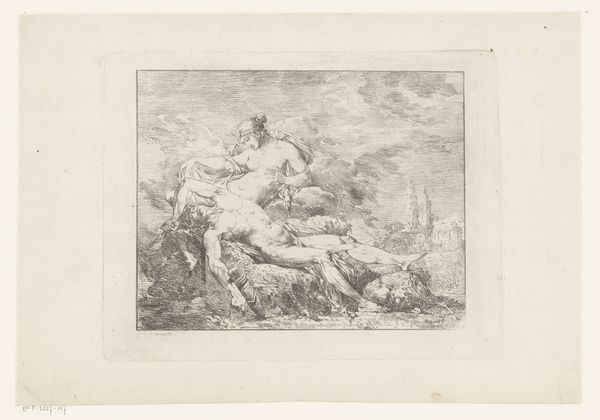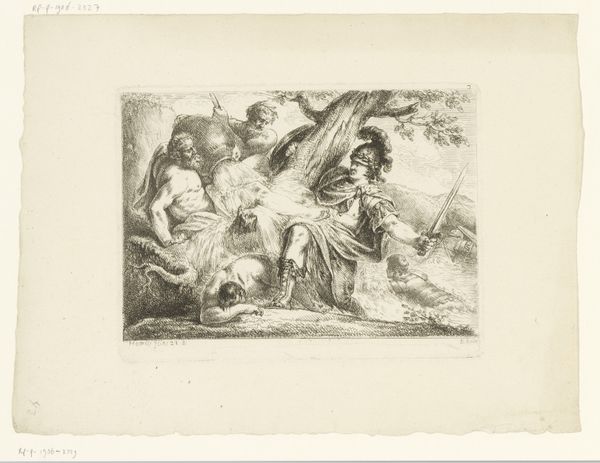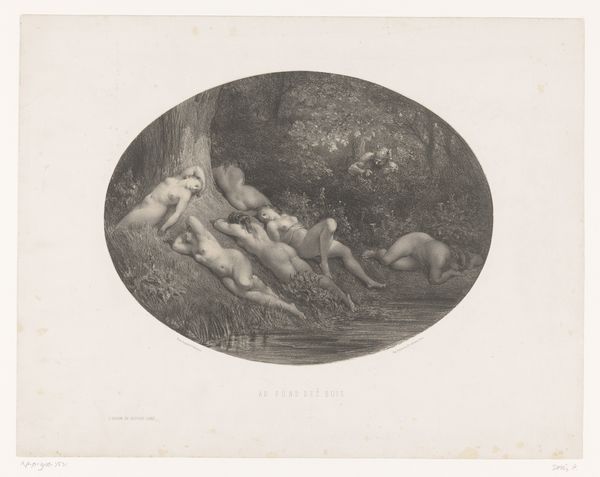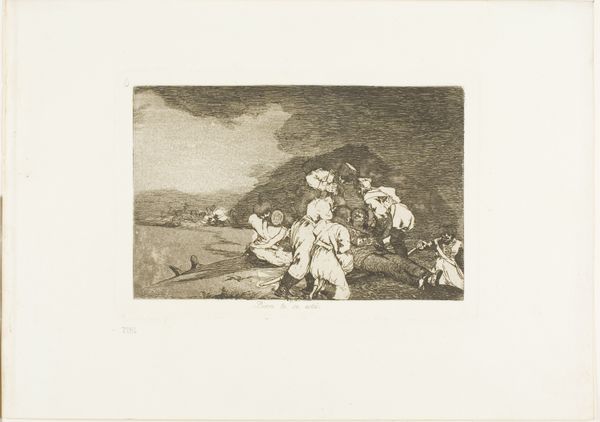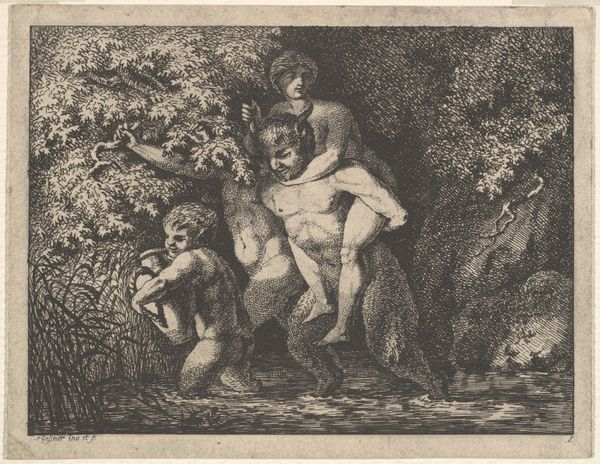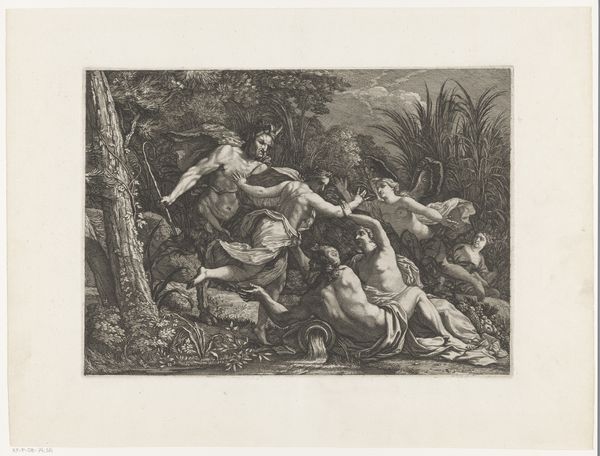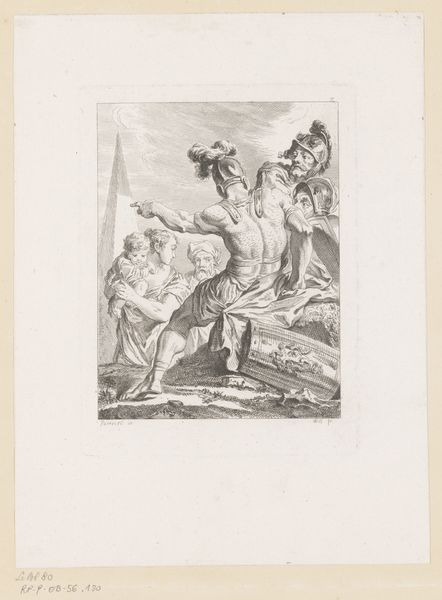
They Make Use of Them, plate 16 from The Disasters of War Possibly 1810 - 1863
0:00
0:00
drawing, print, etching, paper
#
drawing
#
narrative-art
# print
#
etching
#
pencil sketch
#
war
#
figuration
#
paper
#
genre-painting
#
history-painting
#
realism
Dimensions: 132 × 196 mm (image); 160 × 234 mm (plate); 240 × 340 mm (sheet)
Copyright: Public Domain
Curator: Looking at Goya's work is always an intense experience. Let’s consider, for a moment, "They Make Use of Them," plate 16 from *The Disasters of War*, a series the artist possibly began around 1810. He uses etching to unflinchingly depict the atrocities of conflict. Editor: It feels raw. My first instinct is a sort of gut-level sadness mixed with outrage. It looks like a hastily drawn nightmare, and those huddled figures looting the bodies... gives me the chills. The lack of sharp detail almost amplifies the horror, blurring the line between reality and this really visceral rendering of it. Curator: Exactly. The series confronts us with the stark realities of the Peninsular War and invites us to critically examine the power dynamics at play, specifically the violence perpetrated against civilians, focusing on its implications on Spanish identity, its intersectionality with class, gender, and race. We have to situate the work, even within the European context, within this history of exploitation. Editor: You’re so right, and in Goya’s lifetime Spain endured some brutal wars. I wonder, could the loose drawing style itself be a kind of rebellion? A way to show war is chaos. The dark ink scratching like fury on paper. It almost seems to spit at any neat, heroic version of war that history tries to paint. Curator: Precisely. His technique isn’t just expressive; it's a calculated rejection of sanitized war narratives. He shows us the messy, immoral reality. Even that tree looming overhead becomes a sort of silent witness and co-conspirator. It emphasizes how nature itself, should be profiting, becoming this passive observer of exploitation. Editor: That's such a bleak reading. And the caption, "They Make Use of Them..." so flat, almost sarcastic! Is he suggesting even in death, people are just resources, ripe for the taking? That’s an ice-cold perspective. I almost wish there was some glimmer of hope in there, but that probably isn't the point. Curator: His commentary isn't optimistic; it's a denouncement. He understood war as a rupture in society’s very fabric. In these depictions, people aren't dying bravely for king and country. They're anonymous, dehumanized corpses, exploited even in their death. By examining their treatment, it reveals larger truths about societal decay during times of extreme conflict. Editor: Okay, I think that understanding gives me new insight, it feels awful, necessary awful. So Goya uses art as not just an expression, but to confront us with uncomfortable questions that force us to address them ourselves. Curator: Indeed. These images refuse easy answers and urge us toward continuous, critical engagement with our past and present. Editor: Thanks for making the awful less obscure; even seeing horrors needs to be contextualized to make a real lasting difference.
Comments
No comments
Be the first to comment and join the conversation on the ultimate creative platform.
